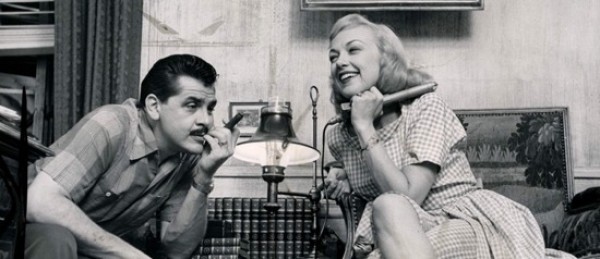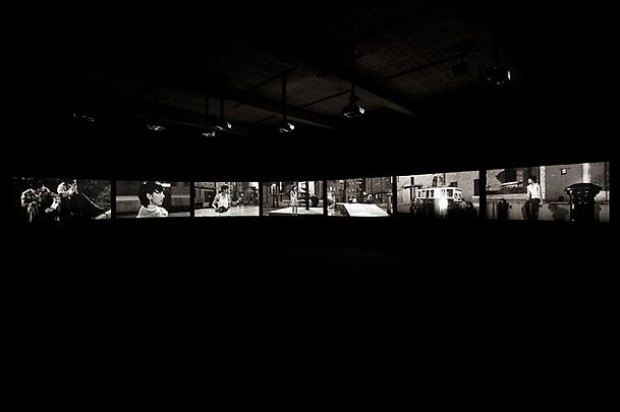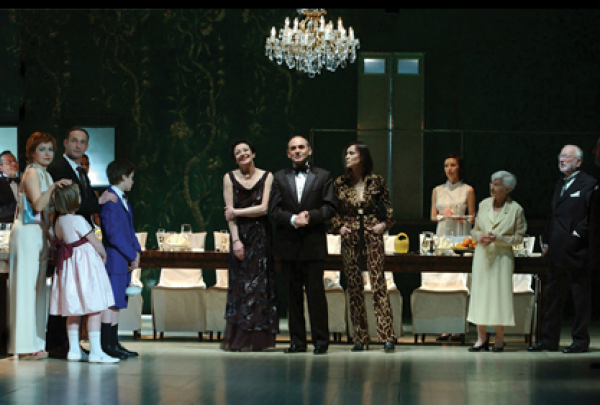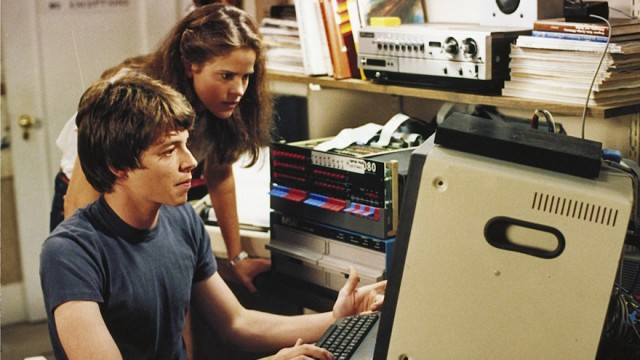
Matthew Broderick and Ally Sheedy get into a mess of trouble in John Badham’s early computer thriller
AFTER THE MOVIE: WARGAMES (John Badham, 1983)
Saturday, April 28, SVA Theater, $25, 1:30
www.tribecafilm.com
 Everyone has a few movies that they can’t turn off when they find it playing on cable. For us, John Badham’s 1983 computer thriller, WarGames, is one of those flicks. Matthew Broderick stars as David Lightman, a Seattle high school techno-geek who spends most of his time goofing around on his desktop computer. When his extremely cute classmate Jennifer Mack (Ally Sheedy) comes over, he impresses her with his mad skills, first adjusting their grades, then battling a talking computer in a pleasant game of thermonuclear war, and finally booking a trip to Europe. Unfortunately, it turns out David accidentally hacked into the Air Force’s WOPR defense system at NORAD, and soon he and Jennifer are on the run, trying to escape the grasp of blowhard Dr. John McKittrick (Dabney Coleman), who is sure they are enemy spies. As General Beringer (Barry Corbin) keeps lowering the DEFCON level, it becomes more than possible that the world might actually be on the brink of WWIII, all because of what started out as a friendly game of chess. Broderick and Sheedy are absolutely adorable in the lead roles, growing closer and closer as danger lurks around every corner, but it’s Corbin who gets most of the memorable lines, including the classic, “Hell, I’d piss on a spark plug if I thought it’d do any good.” WarGames is having a special twentieth-anniversary screening at the Tribeca Film Festival on April 28 at 1:30, followed by a panel discussion with director Badham, star Sheedy, bitcoin developer Gavin Andresen, retired Air Force intelligence officer Major William Casebeer, and hacker and futurist Pablos Holman, moderated by Craig Hatkoff.
Everyone has a few movies that they can’t turn off when they find it playing on cable. For us, John Badham’s 1983 computer thriller, WarGames, is one of those flicks. Matthew Broderick stars as David Lightman, a Seattle high school techno-geek who spends most of his time goofing around on his desktop computer. When his extremely cute classmate Jennifer Mack (Ally Sheedy) comes over, he impresses her with his mad skills, first adjusting their grades, then battling a talking computer in a pleasant game of thermonuclear war, and finally booking a trip to Europe. Unfortunately, it turns out David accidentally hacked into the Air Force’s WOPR defense system at NORAD, and soon he and Jennifer are on the run, trying to escape the grasp of blowhard Dr. John McKittrick (Dabney Coleman), who is sure they are enemy spies. As General Beringer (Barry Corbin) keeps lowering the DEFCON level, it becomes more than possible that the world might actually be on the brink of WWIII, all because of what started out as a friendly game of chess. Broderick and Sheedy are absolutely adorable in the lead roles, growing closer and closer as danger lurks around every corner, but it’s Corbin who gets most of the memorable lines, including the classic, “Hell, I’d piss on a spark plug if I thought it’d do any good.” WarGames is having a special twentieth-anniversary screening at the Tribeca Film Festival on April 28 at 1:30, followed by a panel discussion with director Badham, star Sheedy, bitcoin developer Gavin Andresen, retired Air Force intelligence officer Major William Casebeer, and hacker and futurist Pablos Holman, moderated by Craig Hatkoff.
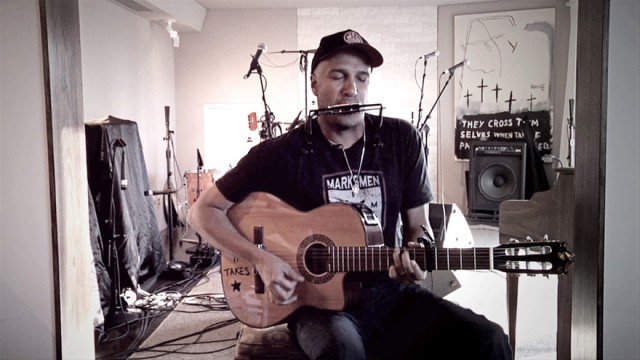
 In his just-released book Let Fury Have the Hour: Joe Strummer, Punk, and the Movement That Shook the World, author, editor, and visual artist Antonino D’Ambrosio writes, “Let Fury Have the Hour, the book and film, is a call to celebrate the art of living, or being for, not against. For the movie, which is having its world premiere at the Tribeca Film Festival this week, D’Ambrosio brought together some fifty artists to talk about how they use creative response in a positive way to deal with the social, political, and economic outrage that began in the 1980s with the separatist policies of Ronald Reagan and Margaret Thatcher and has exploded today. Shot over the course of seven years, the film features intelligent discourse from such musicians as Billy Bragg, Tom Morello from Rage Against the Machine, Wayne Kramer from the MC5, Chuck D from Public Enemy, Eugene Hütz from Gogol Bordello, and, perhaps most eloquently, Ian MacKaye from Fugazi and Minor Threat. In addition, street artist Shepard Fairey (whose designs can be seen throughout the film), spoken-word poet Staceyann Chin, comedian Lewis Black, filmmaker John Sayles, author Edwidge Danticat, playwright Eve Ensler, choreographer Elizabeth Streb, skateboarder Tommy Guerrero, and many more share how the DIY punk aesthetic influences them in their work and their daily life as they continue to fight the power through artistic self-expression that understands the interconnectedness of everything. “Our freedom of speech is our freedom from death,” Chuck D states. The jumping-off point for many of those in the film, as well as D’Ambrosio himself, was the music of the Clash; the title comes from a line in the Clash classic “Clampdown.” D’Ambrosio and editor Karim Lopez supplement the original interviews, which are all conducted in personal settings unique to each individual, with dramatic archival footage of political and artistic movements from around the world throughout the twentieth century, backed by a score composed by Kramer with songs by Public Enemy, Hütz, Sean Hayes, and others. It all comes together in a rousing wake-up call that is a direct counter to Reagan’s “Morning in America” agenda. “A citizen is someone who participates,” DJ Spooky says in the film. D’Ambrosio is seeking to spread his message of creative response by getting as many citizens as possible to participate in any way they can, making an ambitious film that avoids coming off as propaganda and instead feels necessary in these hard times.
In his just-released book Let Fury Have the Hour: Joe Strummer, Punk, and the Movement That Shook the World, author, editor, and visual artist Antonino D’Ambrosio writes, “Let Fury Have the Hour, the book and film, is a call to celebrate the art of living, or being for, not against. For the movie, which is having its world premiere at the Tribeca Film Festival this week, D’Ambrosio brought together some fifty artists to talk about how they use creative response in a positive way to deal with the social, political, and economic outrage that began in the 1980s with the separatist policies of Ronald Reagan and Margaret Thatcher and has exploded today. Shot over the course of seven years, the film features intelligent discourse from such musicians as Billy Bragg, Tom Morello from Rage Against the Machine, Wayne Kramer from the MC5, Chuck D from Public Enemy, Eugene Hütz from Gogol Bordello, and, perhaps most eloquently, Ian MacKaye from Fugazi and Minor Threat. In addition, street artist Shepard Fairey (whose designs can be seen throughout the film), spoken-word poet Staceyann Chin, comedian Lewis Black, filmmaker John Sayles, author Edwidge Danticat, playwright Eve Ensler, choreographer Elizabeth Streb, skateboarder Tommy Guerrero, and many more share how the DIY punk aesthetic influences them in their work and their daily life as they continue to fight the power through artistic self-expression that understands the interconnectedness of everything. “Our freedom of speech is our freedom from death,” Chuck D states. The jumping-off point for many of those in the film, as well as D’Ambrosio himself, was the music of the Clash; the title comes from a line in the Clash classic “Clampdown.” D’Ambrosio and editor Karim Lopez supplement the original interviews, which are all conducted in personal settings unique to each individual, with dramatic archival footage of political and artistic movements from around the world throughout the twentieth century, backed by a score composed by Kramer with songs by Public Enemy, Hütz, Sean Hayes, and others. It all comes together in a rousing wake-up call that is a direct counter to Reagan’s “Morning in America” agenda. “A citizen is someone who participates,” DJ Spooky says in the film. D’Ambrosio is seeking to spread his message of creative response by getting as many citizens as possible to participate in any way they can, making an ambitious film that avoids coming off as propaganda and instead feels necessary in these hard times.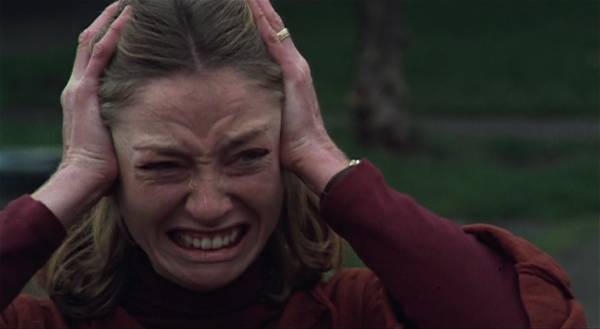
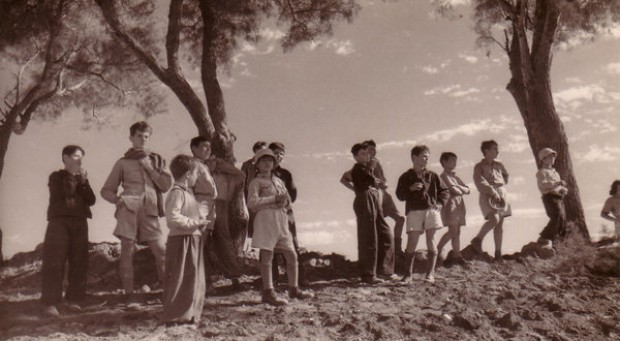
 Inspired by her eighteen-year-old sister’s move to a kibbutz back in 1968, Toby Perl Freilich has written, directed, and produced the compelling documentary Inventing Our Life: The Kibbutz Experiment. Freilich (Secret Lives: Hidden Children & Their Rescuers) traces the hundred-year history of the kibbutz movement in Israel by meeting with three generations of current and former kibbutzniks, who discuss what life was like on such collectives as Degania, Hulda, and Sasa. Mixing in archival footage and black-and-white and color home movies that include some of the very people she is speaking with, Freilich delves into the daily life of the kibbutz, beginning with the earliest immigrants settling a vast wasteland and organizing socialist communes in which most everything was shared; there was no separation of wealth, children were reared and educated together mostly outside the home, and food was eaten in large dining halls that served as the center of the community’s social life. Although critical to the success of the new state of Israel in 1948, the kibbutz grew out of favor by the 1980s as the younger generation began to leave, government support waned, and privatization beckoned. Such historians and philosophers as Avishai Margalit, Moshe Halbertal, and Menachem Brinker place the kibbutz in historical context as men, women, and children talk about what they loved — and hated — about living on a kibbutz. Freilich will be at the Quad for Q&As following the 7:10 screenings on Friday and Saturday and the 5:00 show on Sunday.
Inspired by her eighteen-year-old sister’s move to a kibbutz back in 1968, Toby Perl Freilich has written, directed, and produced the compelling documentary Inventing Our Life: The Kibbutz Experiment. Freilich (Secret Lives: Hidden Children & Their Rescuers) traces the hundred-year history of the kibbutz movement in Israel by meeting with three generations of current and former kibbutzniks, who discuss what life was like on such collectives as Degania, Hulda, and Sasa. Mixing in archival footage and black-and-white and color home movies that include some of the very people she is speaking with, Freilich delves into the daily life of the kibbutz, beginning with the earliest immigrants settling a vast wasteland and organizing socialist communes in which most everything was shared; there was no separation of wealth, children were reared and educated together mostly outside the home, and food was eaten in large dining halls that served as the center of the community’s social life. Although critical to the success of the new state of Israel in 1948, the kibbutz grew out of favor by the 1980s as the younger generation began to leave, government support waned, and privatization beckoned. Such historians and philosophers as Avishai Margalit, Moshe Halbertal, and Menachem Brinker place the kibbutz in historical context as men, women, and children talk about what they loved — and hated — about living on a kibbutz. Freilich will be at the Quad for Q&As following the 7:10 screenings on Friday and Saturday and the 5:00 show on Sunday.